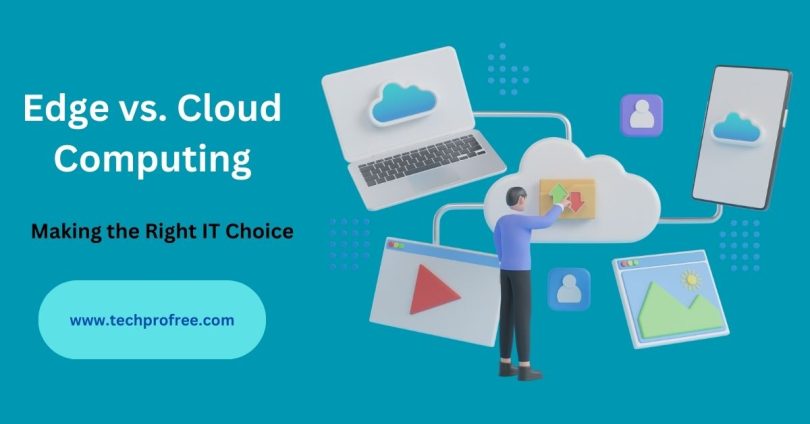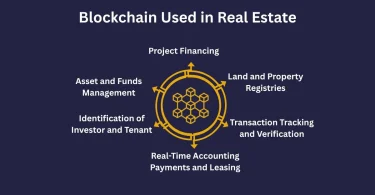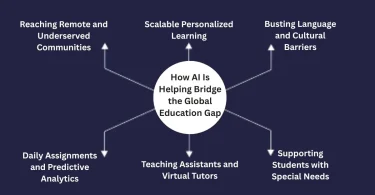Introducing Edge Computing and Cloud Computing
Edge Computing: What is It?
It’s a new approach working with computers called edge computing. It’s all about using special networks and devices that are really close to the person using them. Edge computing processes data locally rather than transferring it for processing to a distant location. This accelerates events and enables us to complete more tasks in real-time.
Edge computing is similar to having a smart computer nearby that can function without requiring to send data far away. This allows us to move swiftly and make decisions more quickly, which is quite important.
We’re exploring edge computing versus cloud computing today.
Let’s start by exploring how and many companies move their activities to the cloud. Increasingly, organizations of all sizes are transferring their apps to the cloud, allocating more than 28% of their IT budgets to this endeavor. In fact, a significant 70 percent of organizations currently have at least one application hosted in the cloud. This pattern demonstrates how companies are embracing cloud computing and realizing its benefits.
Cloud engineers are in high demand due to the outbreak of cloud use. Obtaining a cloud certification from a reputable organization can give you the knowledge and abilities required to embark on a career in cloud computing. While edge computing is becoming more and more popular, some experts believe that the age of cloud domination is coming to an end and are turning their attention to the growing popularity of edge computing.
The Edge Advantage: Why Edge Computing Outperforms Cloud Computing?
Now let’s discuss the distinct benefits of edge computing vs. cloud computing.
Imagine a critical machine in an organization that cannot afford even the slightest delay in decision-making. This is where edge computing shines. Instead of sending data from the machine to a central data center, which can take up to 2 seconds, edge computing places smart devices with computing power right at the network’s edge. These devices continuously track crucial metrics, and if something is down they generate an alert. The machine immediately shuts down in the event of a critical problem, preventing further losses. The benefit of edge computing is its speed. Edge computing processes data quickly, in contrast to cloud computing, which has delays in data transfer. Edge computing is the best option in circumstances where every second matters.
Choosing Between Edge Computing and Cloud Computing: What’s the Right Fit?
It’s important to distinguish between edge computing and cloud computing, as they serve distinct purposes. Cloud computing is well-suited for tasks that don’t require immediate processing, while edge computing shines when handling time-sensitive data that needs quick analysis.
Moreover, edge computing proves advantageous in remote regions where access to centralized locations is limited or nonexistent. These places require local storage and processing power; which edge computing provides effectively.
Edge computing is furthermore perfect for specialized intelligent gadgets. These electronic devices are quite effective since they are made to respond to specific behaviors. But in fields that need a wider range of skills, specialization can be limiting.
Cloud Computing’s Enduring Importance in IT: A Look into the Future.
While some predict the decline of cloud computing in favor of edge computing, there’s no concrete evidence to support this claim. Edge computing doesn’t handle all applications across multiple contexts or address all issues encountered by IT suppliers and organizations. Consequently, cloud computing will keep playing a crucial role in the information technology structures of organizations.
Consider an IoT gadget with processing power and Azure capabilities as a case study. Without primarily relying on the cloud, this device is capable of responding to critical problems quickly. It supports cloud computing and offers real-time solutions and remote management of IoT devices. This demonstrates that cloud computing will continue to be relevant and work in tandem with edge computing to provide organizations with data analytics and quick fixes.
Conclusion:
In the empire of IT, the choice between edge and cloud computing holds immense significance. Our exploration reveals their distinct advantages. Edge Computing shines when speed is paramount, ensuring swift decision-making, especially in critical scenarios. Meanwhile, Cloud Computing stands as a reliable cornerstone of IT infrastructure, offering scalability and adaptability. The question isn’t about choosing one over the other; it’s about harnessing their complementary strengths. Edge and cloud computing work best together to deliver flexible solutions. It’s becoming more and more clear as technology advances that these two systems can work together well. Success in this dynamic IT environment depends on understanding their interdependence and utilizing it to promote future innovation and efficiency.




Leave a Comment